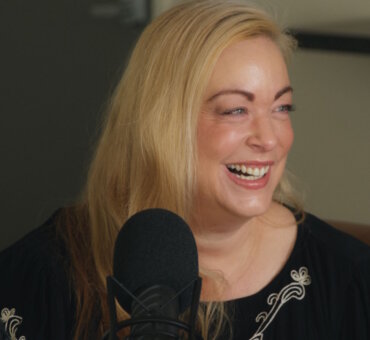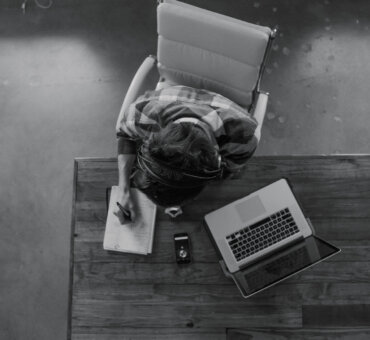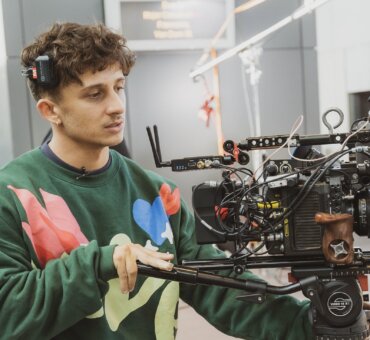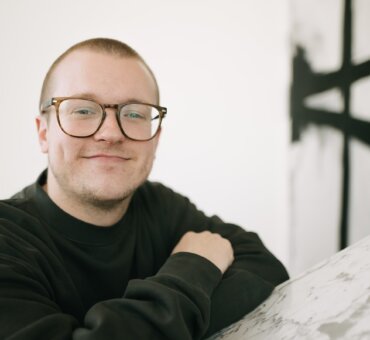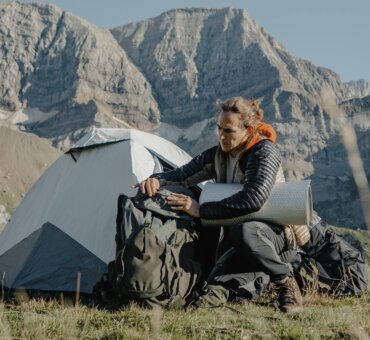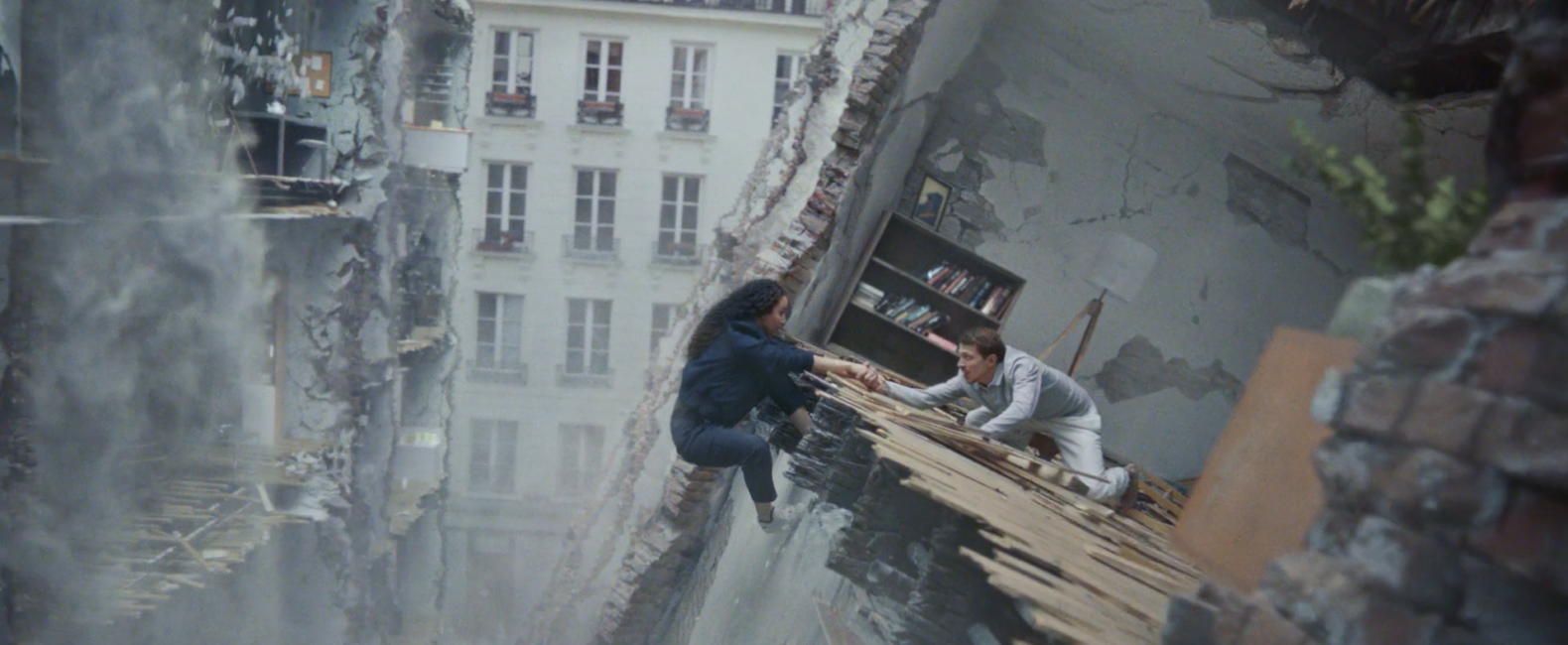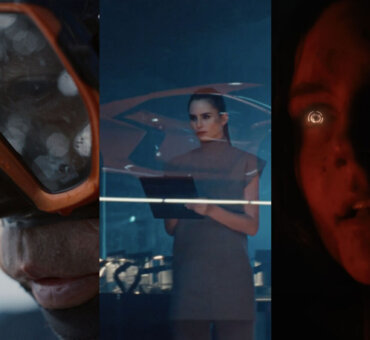Just like a good book, film or poem, a good ad requires repeat viewing. On the first watch of Lacoste’s incredible “Crocodile Inside” spot, you’ll follow the story and the spectacle, and maybe even look up the stunning song (It’s “Hymne à l’amour” by Edith Piaf). You may get a few chills or even notice the Buster Keaton-inspired moment.
Then, after a few more views, you’ll begin to notice the set and the background, and as the building crumbles, wonder, “How does this look so good?” A big part of the answer to that question is Producer Charlotte Marmion, an iconic producer in ads and music videos, with Iconoclast. Along with directing team Megaforce, she was responsible for solving the problems that led to this spot, which were surprisingly simple and equally genius:
“You need to be able to find solutions. You need to think. That’s something I like, this idea of production value, finding ideas that cost nothing but when you see the image, look amazing,” Charlotte told us.
We were lucky enough to get a chance to speak with Charlotte about her work on this project, including the usage and construction of multiple sets, old-school trickery, and masterful performances from the actors. It’s an incredible glimpse into a groundbreaking production, but also a reminder that sometimes complicated problems have simple solutions. Of course, that doesn’t mean it’s going to be easy.
Here’s Iconoclast Producer Charlotte Marmion.
Musicbed: Does part of you get excited when problems show up?
Charlotte Marmion: It’s exciting to find solutions for problems. I’m not going to say I want problems but it’s true that I now choose challenging jobs where you need to find solutions and invent solutions rather than jobs where there’s not much of a challenge. I’m super lucky. Some people do the same job every day. My job brings new challenges every day, new things to do, and I have the opportunity to do different things every day and research crazy stuff.
I’ve had people say, “Okay, we need to shoot in a wheat field in the middle of December.” Then, I have to research wheat and where the wheat fields are highest in the world in December. I’ve learned crazy things about wheat. I like it. I like the idea of researching random things to make solutions work. I’m super lucky that it’s my job.
What personality is the best fit for production?
You need to be able to be playful in production because things will never go as planned. The directors always challenge you to find solutions. Lacoste is a good example. Originally, the script was about a couple having a fight and there was some kind of earthquake and everything was crumbling into them and [the Director] Megaforce made it about this building splitting in two pieces. It was super challenging to achieve.
You need to be able to find solutions. You need to think. That’s something I like, this idea of production value, finding ideas that cost nothing but when you see the image, look amazing. It’s always appealed to me, finding crazy ideas that look amazing on-screen and you’ve done it with almost nothing. There’s a shot in Lacoste, at the beginning of the fight where you see the couple, and the room starts to move apart. We did it in-camera. Part of the apartment was built on scaffoldings with wheels and we had 20 guys pushing it very slowly. It was not some electronic device with wire. It was just a bunch of guys pushing it on wheels.
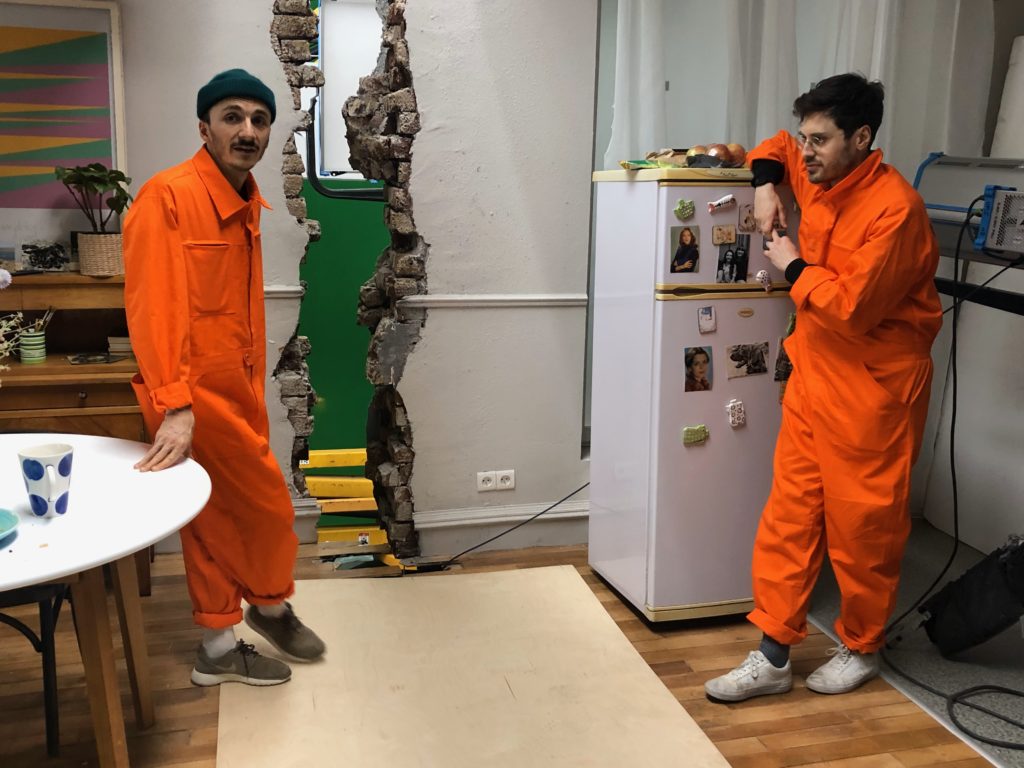
Could you describe the apartment set?
The first set, the main apartment, was built for real and the split part of the ground was hidden. It was built as a normal apartment, brand new. After losing half of it, we redressed it for different parts of the shoot. Another half of the apartment was on wheels and it was redressed for a different stage of the film. When we got the apartment built, the moving part had the window where they were supposed to fall. They also built a pile of rubble for when they were sliding down the building. We didn’t have that much of the studio, so everything was packed together. It was a pretty big mess.
There were little pieces built everywhere. The production team was able to be so precise because the director had been so precise in their shot list and what needed to be framed. That helped a lot in order to not build more than we needed because we were already really struggling with the budget. They built the whole thing in about two weeks.
What were some of the biggest challenges during the shoot?
The biggest challenge was to achieve as much as possible in-camera. If you look at this shot of the couple drifting away on each side of the apartment, we could have done it in CGI, but we wanted to do it for real. How do you achieve those things for real? In the end, we managed to do it working with an amazing crew and using quite old school solutions—the guys pushing the set on just scaffolding with wheels was one example of it.
Another example is the shot where they are sliding on the ground. We didn’t have the money to build another set that was inclined. So, we used the same set, we extended it and we pulled them with rope. We simply tilted the camera so you have the feeling that the set is tilted, but it’s not, it’s just the camera. We used a lot of little things like that and it looks good on camera.
It’s a testament to the talent of the Megaforce, for sure. I consider them geniuses. They are so good, so precise in their work. At the beginning of the project, they did a storyboard and if you watch it on the split screen with the footage, it’s almost exactly the same. They already had in their minds how it would be shot. As a producer, it’s much easier to help them because they know exactly what they’re trying to achieve and where we’re going. The production designer also worked miracles. Basically, he redressed the same apartment over and over again for almost all the steps, which was super challenging because the apartment goes from a normal apartment to a ruin. He did amazing work and the DP also found solutions with camera tricks to make things work.
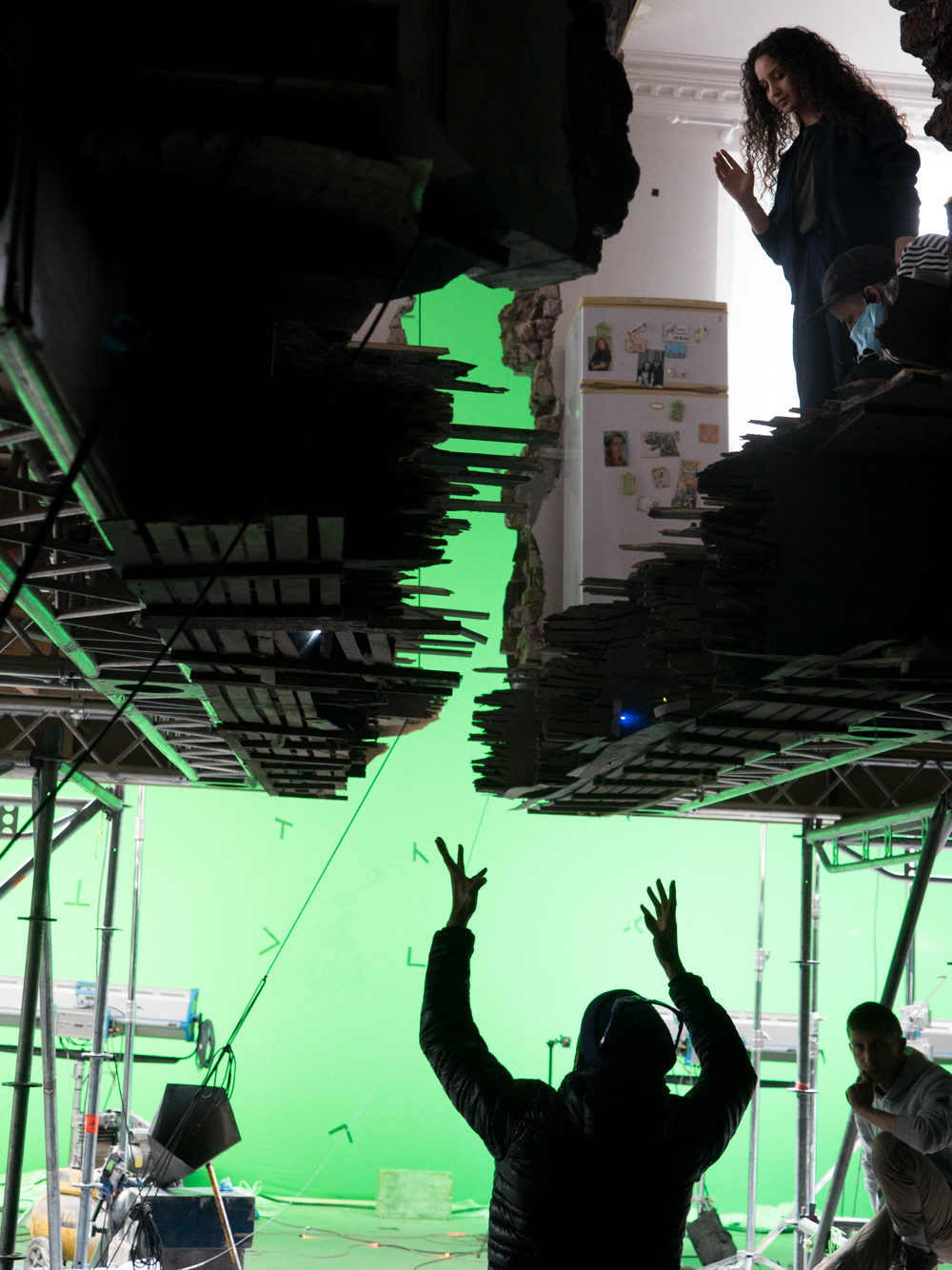
Speaking of old school, have you heard of the American actor Buster Keaton?
Ah yes, the building falling down on the actors! Exactly. He was one of the references from the directors.
The whole production has a very tangible, almost “silent film” vibe to it.
Yeah, it does. Even though there’s a lot of action, most of the piece is about the faces and the emotions that you can read on the characters. I’m talking a lot about the technical aspect, but because we had real actors and their performances are so good, everything that happens around them is almost invisible. You’re focused on their relationship. How are they going to end up together at the end? The film is really good because of their performance.
Did they have a fully scripted dialogue, even though you can’t hear what they’re saying?
Yes, they did. A lot of nasty words. [Laughs]
Was the choice to shoot most of this spot in-camera due to budget?
No, it would’ve been much less expensive to use CGI. That was a decision that came from the directors. I’ve known them for a very long time and have worked with them for a while. I’m lucky to have a collaborative relationship with them. I’m not going to say we have the same taste, but we’re aligned on what we like and what we’re trying to achieve.
What did your collaboration look like with them?
There was a lot of work during the treatment phase, rewriting the story and the emotional parts for each character — what it meant for them, how the argument was happening and so on. Our desire was also not to have a white couple, to add diversity, which can be more difficult in France than in the U.S. Getting the right actors was something we worked on and talked about with Megaforce.
The actors we found are really big actors in France and real actors that can deliver great performances. They are not models at all, and they had never been in a commercial before this one. They made it because they liked the idea behind the story. We were lucky that the agency followed our recommendation on the casting.
There were a lot of discussions. I’ve been in this business for a long time and I think the relationship between producers and directors has changed because the business has changed. Twenty years ago, commercials had superstar directors and you couldn’t tell them no. Now it’s different and the way we do things at Iconoclast is different.
All the directors we have, we discuss things with them and if something is not possible, we just tell them the truth. “We don’t have this in the budget. How can we make it work?” It’s an open discussion. We make choices together because we want the same thing at the end. We want to make a good ad and we don’t want to go bankrupt and close the shop. We all benefit.
Do you think a producer’s role is getting more creative?
I think good producers have always been involved in creating. But, the truth is that there is less money now. In order to do good work, you have to be creative. Talent has always been around, so maybe we as producers need to be a little more creative to do good work. And at the same time, you have other issues that appear. Sometimes clients are afraid of how they communicate, and social media has opened the door to huge backlash that sometimes you can’t foresee.
I’m going to give you an example. A few months ago, there was an ad in France, where someone was making a joke about oysters not being fresh. And all the oyster farmers made a huge demonstration against the brand. They collected trucks of all these un-fresh oysters and dropped them at the offices of the brand. It was a nightmare for them. For one joke. So now, very often clients say, “Let’s not maybe do that.”
Is part of your job as a producer making sure you’re defending the director’s vision?
Lacoste is a good example because everybody was going in the same direction—the client, agency, and director. Everybody had the same vision. Everybody had the same goal and it worked and you can see it in the final product. We manage to have a really good ad when the visions are aligned and everybody’s going in the same direction, the energy is all the same. We’re building something to be as good as possible.
But it’s true that sometimes people are not aligned and at the end, the project suffers. You have to fight for your ideas. Sometimes it works, sometimes it doesn’t work. In the Lacoste ad, the original script had the guy jumping. When we talked through it, one of the first changes we made was that the girl was going to jump. And the client said, “Yeah. Great.” And followed us instantly. She ended up making the physical efforts to bring back the love in the couple.
Ultimately, how do you view this project in your career?
I think it’s the project I’m most proud of. I was so lucky to make it. One of the reasons I loved it was the original script, the fact that it talks about the fight between lovers, and it’s not necessarily positive. Usually, ads are more about the positive aspects of life and here it’s really negative with people fighting so hard that they are being physically separated. I think that was very original.
Looking back, I think it was great. But, when I was shooting it, I would not have said that. I was sweating blood. [Laughs] I was super stressed and it was really challenging. You’re shooting 16 hours per day. And because the sets were so separated and we were shooting all the little pieces, it was hard to have an overview of the result at the end.
I remember when I saw the first edit, even though it was against the green screen, I got super emotional because of the performance of the characters. I immediately said, “Oh my God, this is going to be so good. It’s so good.” I was really proud. It was a hard project, but it was worth it.
Read how producer Simon Dragland and director Kevin Foley approached the unique challenges behind filming an Olympic campaign.


